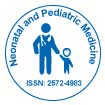Our Group organises 3000+ Global Conferenceseries Events every year across USA, Europe & Asia with support from 1000 more scientific Societies and Publishes 700+ Open Access Journals which contains over 50000 eminent personalities, reputed scientists as editorial board members.
Open Access Journals gaining more Readers and Citations
700 Journals and 15,000,000 Readers Each Journal is getting 25,000+ Readers
Recommended Conferences
42nd Global Conference on Nursing Care & Patient Safety
Toronto, CanadaGoogle Scholar citation report
Citations : 303
Neonatal and Pediatric Medicine received 303 citations as per Google Scholar report
Indexed In
- Google Scholar
- RefSeek
- Hamdard University
- EBSCO A-Z
- ICMJE
Useful Links
Recommended Journals
Related Subjects
Share This Page
Compartion NAVA mode ventilation vs PSV & CPAP mode of ventilation
21st Annual World Congress on Neonatology
Donka Uzunova
Technical University, Sofia, Bulgaria
ScientificTracks Abstracts: Neonat Pediatr Med
Abstract
Neurally Adjusted Ventilatory Assist (NAVA) is newest mode of artificial ventilation. The potential of NAVA to adjusts ventilatory baby â�?�?s efforts and to the reduce Ventilator Induced Diaphragm Dysfunction. This action is based on the continuous coupling between the patient�?´s neural output and ventilator assistance. In contrast to Pressure Support ventilation, where a gradual increase in the assist level will abolish the electrical activity of the diaphragm, an increase in the NAVA level will unload the muscle, but still maintain muscle activity. Hence, over-assist by Pressure Support will function as a semi-controlled mode where the patient may be triggering the ventilator, by a small activation of the intercostal muscles resulting in a large tidal volume delivery. In contrast, NAVA will maintain the same tidal volume and physiologic diaphragm activation with the degree depending on the NAVA level set. The standard modes include PSV and CPAP modes Comparison of NAVA mode with standard respiratory support in children with neonatal RDS * Describe clinical characteristics, respiratory parameters and subjective signs of comfort during treatment in patients in the described two groups of ventilation in the neonatology department of the second Sheinovo Hospital- Sofia. * This is a prospective study of cases in the two groups described INCLUDING CRITERIA: Ventilated patients in these two groups, with a subject of detailed pathology and available to breath spontaneously. The cases till now 22 cases were processed in two of groups. Exceptions is ventilated patients with asphyxia, aspiration syndrome and neurological signs o NAVA invasive mode * PSV o NAVA non-invasive ventilation * CPAP REPORT ON THE QUALITY OF SYNCHRONIZATION AND COMFORT Synchronization with the apparatus- with the following signs hours of calmness and sleeping / without alarm on the monitor system/,the presence of tachydispnea. We use the Index asynchronization - The asynchronous index (AI). It is calculated as the number of cycles with a visible desynchronization /auto - triggering, insufficient spontaneous breathing, double triggering, short breathing cycle/ divided by the number of synchronized cycles, calculated at the rates per unit time according to the index of respiratory effort, calculated as the ratio of the EAdi / TIn for each respiratory cycle during the observed 15-minute period the number of cases of reintubation or changing of mode of ventilation Conclusion: Registration of the advantages of the invasive Nava mode at low gestational age and spontaneous respiration of more than 20%, exceptionally good effect on post-extubating patients in both modes of non-invasive ventilation, a clear advantage of full-term patients with extra alveolar gas collections from the non-invasive Nava mode during recovery.Biography
Donka Uzunova has her expertise in evaluation and passion in improving the health and wellbeing to the premature newborns and ill newborns. She is the head of The Department of Neonatology. Her activity is for evaluation and support of mechanical ventilation strategies noninvasive and gentles modes for new-born babies. Her experience for NAVA ventilation is just on the start point with the tendency for developing and improving ventilatory support technics.

 Spanish
Spanish  Chinese
Chinese  Russian
Russian  German
German  French
French  Japanese
Japanese  Portuguese
Portuguese  Hindi
Hindi 